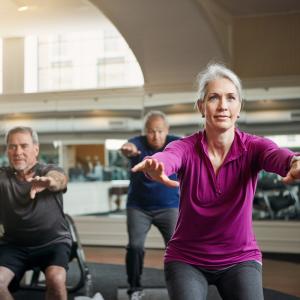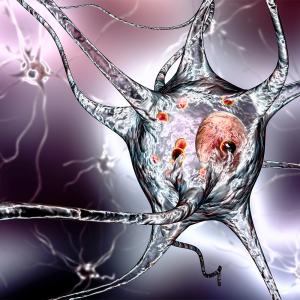In 2015, NYU Langone’s division for the treatment and research of Parkinson’s and movement disorders gained a new name and an international presence. Last June, the center was officially renamed the Marlene and Paolo Fresco Institute for Parkinson’s and Movement Disorders, after a $25 million gift from the Paolo and Marlene Fresco Foundation. In carrying on NYU Langone’s renowned Parkinson’s program—designated a National Parkinson Foundation Center of Excellence since 2009—the Fresco Institute’s clinical operations will be led by Alessandro Di Rocco, MD, Founders Professor of Neurology and chief of movement disorders, who serves as the institute’s executive director. The institute will also be opening a fully integrated operation in Italy, and will continue to expand its research programs under the guidance of its scientific director, Richard Tsien, PhD, Druckenmiller Professor of Neuroscience and chair of neuroscience and physiology.
“The Fresco Institute will establish stronger bridges between clinical science and basic science of movement disorders, particularly Parkinson’s disease,” notes Dr. Tsien, who is also director of the Neuroscience Institute at NYU Langone. “It will also build vibrant connections between scientists in the United States and in Italy, working on disorders of the brain.”
The institute’s branch in Italy will be a medical, research, and educational center that will act as a centralized hub, coordinating efforts with movement disorder programs in that nation. “Through fellowships and clinical and scientific collaborations with Italian Parkinson’s institutions, our aim is to develop better treatments and understanding of the disease,” says Dr. Di Rocco.
Studying Exercise and Bringing Telemedicine to Homebound Parkinson’s Patients
One research project now underway is a study to better understand the potential benefits of exercise and repetitive transcranial magnetic stimulation (rTMS) for Parkinson’s patients. The project will study differences in how brain-derived neurotrophic factor (BDNF)—a protein factor that can induce the growth of new neurons and synapses and prevent the death of existing brain cells—impacts brain function in people with and without Parkinson’s, as well as how exercise and noninvasive rTMS affect this marker and brain function in general in Parkinson’s patients.
The study is one of several that Fresco Institute researchers are now conducting on the ability of rTMS to control the motor symptoms of Parkinson’s. Previous trials at NYU Langone have demonstrated that the technology can reduce levodopa-induced dyskinesias. The Fresco Institute’s neurostimulation lab currently utilizes three state-of-the-art TMS machines along with a neuronavigation system that allows specific brain regions to be stimulated with high accuracy.
In another important advance, the Fresco Institute has spent the past year working with NYU Langone’s IT group to develop a telemedicine component for its pioneering home care program. In the program, launched in 2014 for patients with advanced Parkinson’s who have difficulty traveling, Fresco Institute physicians evaluate patients in their homes, and a social worker and nurse make regular follow-up visits. The telemedicine element, scheduled to launch in January 2016, will enable Fresco Institute physicians to confer with the patients remotely during these follow-up visits, using a laptop and mobile Wi-Fi connection provided to the home care team.
“This capability will allow me to join the team virtually to perform Parkinson’s-specific neurological and cognitive examinations—both of which have been validated for telemedicine,” says the Fresco Institute’s Jori E. Fleischer, MD, assistant professor of neurology and population health. “I’ll also be able to ask questions of the patient and the family, answer questions they may have, provide counseling, and observe the social worker’s psychosocial evaluation and counseling, the nurse’s medication reconciliation and counseling, and the home safety assessment.”
In addition, she notes, the team will have the ability to document the visit in real time on NYU Langone’s electronic medical records system, create an after-visit summary for the patient and the family, and print out the summary for the family on the spot.

